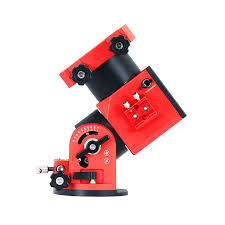In the age of wireless devices, it’s easy to underestimate the importance of what lies beneath the surface. Behind the cloud-based apps, VoIP phones, access points, and security cameras lies a system that makes everything function seamlessly: structured cabling. Often overlooked, this physical infrastructure forms the central nervous system of any digitally connected business.
Let’s explore why structured cabling is no longer just a matter for the IT department, but a strategic consideration for businesses of all sizes and types.
More Than Just Connectivity
Most people think of cabling as simple wiring—copper or fiber strings connecting hardware. In reality, structured cabling refers to an organized architecture for managing all communications across a facility. This includes data, voice, video, and even control systems for lighting, HVAC, and access control.
Without a solid structured cabling plan, businesses often find themselves dealing with connectivity failures, poor system performance, or costly upgrades down the line. That’s why many organizations now treat cabling as foundational infrastructure—right alongside electrical, plumbing, or ventilation.
At Complex Security Solutions, Inc., the integration of structured cabling with advanced technologies like access control and security cameras is central to providing reliable, scalable systems that evolve with a business’s needs.
The Case for Standardization
One of the biggest advantages of structured cabling is standardization. Instead of relying on a patchwork of vendor-specific wiring for each device or application, businesses can use a unified system that supports multiple technologies.
This standardization leads to:
- Simplified maintenance: Technicians can easily identify and troubleshoot problems.
- Easier scalability: Adding new devices or users becomes plug-and-play rather than disruptive.
- Reduced costs: A single cabling system reduces redundancy and material waste.
It also means businesses are better prepared for future technology upgrades, whether it’s higher-speed networks, additional security cameras, or the growing demand for bandwidth-heavy services like video conferencing and remote work platforms.
Structured Cabling and Access Control
In modern workplaces, access control systems are increasingly IP-based. They rely on reliable data transmission to function properly—whether it’s authenticating users, logging entries, or triggering alarms. Without high-quality cabling in place, access control can lag, malfunction, or leave gaps in security.
Worse, inconsistent cabling can limit the effectiveness of surveillance tools. A high-resolution camera might promise sharp footage, but if it’s connected via outdated or poor-quality cabling, the video feed may become unreliable or delayed.
That’s where businesses gain an edge by investing in structured cabling as part of a comprehensive infrastructure strategy. It ensures security devices function at their full potential, backed by a system that’s built to handle both current demands and future growth.
Enabling Managed IT Services
The rise of managed IT services has introduced new complexities in how businesses view their networks. Rather than managing servers, backups, and network health in-house, many companies now outsource these tasks to experts who monitor and maintain systems remotely.
Structured cabling is essential for this arrangement to succeed. A misconfigured or poorly documented cabling layout can slow remote troubleshooting, obscure root causes, and even lead to data loss or prolonged outages.
High-performing managed services depend on real-time access, consistent bandwidth, and low latency—all of which rely on a cabling system that’s optimized and well-maintained.
Preparing for the Smart Office
Today’s offices are smarter than ever. From connected thermostats and lighting to digital whiteboards and occupancy sensors, the number of devices on a business network is growing rapidly.
This trend, part of the broader Internet of Things (IoT) movement, puts enormous pressure on network infrastructure. A single smart office might support hundreds of endpoints, all communicating simultaneously. Structured cabling provides the backbone necessary to manage that level of activity efficiently.
Without it, businesses risk bottlenecks, dropped signals, or worse—system failures during critical operations.
Cabling and Security Cameras: A Critical Link
When people think of security cameras, they imagine the devices themselves: domes on ceilings, bullet cams outside buildings, or smart analytics dashboards. But the reliability of those systems often comes down to what can’t be seen—the cables.
A poorly installed cable or insufficient power supply can result in lost footage, choppy feeds, or frequent outages. In high-risk environments, those failures can have serious consequences.
Structured cabling eliminates these weak links by ensuring cameras are powered correctly, data is transmitted at optimal speeds, and signals are shielded from interference. This makes security camera networks more resilient and ensures footage is recorded and stored without compromise.
For organizations working with industry specialists like Complex Security Solutions, Inc., structured cabling becomes more than just a utility—it becomes an asset, offering long-term value and peace of mind.
Environmental and Cost Considerations
Good structured cabling also pays off in environmental sustainability and cost control. Well-organized cabling reduces the need for additional power, avoids overheating in crowded server rooms, and eliminates the constant need for patch repairs or re-runs.
It also allows businesses to consolidate and optimize their technology footprint. With unified cabling systems, fewer physical materials are used, and maintenance becomes faster and less wasteful. Over time, this reduces both capital expenditures and operational costs.
Best Practices for Planning
Planning a structured cabling system isn’t just about stringing wires from Point A to Point B. It involves careful analysis of current needs, future growth, equipment layout, and environmental variables such as temperature, airflow, and potential interference.
Key considerations include:
- Futureproofing bandwidth: Plan for higher speeds and growing traffic.
- Labeling and documentation: Avoid confusion with clear mapping.
- Segmentation: Separate critical systems like access control and IT services to ensure uptime.
- Physical protection: Use conduits, trays, and safe routes to avoid cable damage.
When done properly, structured cabling becomes a flexible platform that can support decades of technological advancement with minimal rework.
Closing Thoughts
Businesses that invest in structured cabling are not just setting up for today—they’re preparing for the future. From ensuring that security cameras deliver real-time insights, to supporting IT managed services and scalable access control, a solid cabling foundation makes everything else possible.
And while the infrastructure may not be visible, its impact is always felt—through faster connections, reliable systems, and peace of mind.
That’s why organizations partner with trusted providers like Complex Security Solutions, Inc.—to ensure their backbone is as strong and secure as the technology it supports.











































































